Keyword Clustering - A Superior Technique That Can Enhance Your SEO Strategy
You have heard multiple times we should put many keywords into an article so you can rank multiple keywords, but nobody tells you a way to determine which keywords should be put together and which "SHOULD" be not.
If are you still looking for an answer, this article is for you. In this article, I will show you how to do keyword clustering by using Larseo.

Benefits of keyword clustering
Keyword clustering can provide a number of benefits, including:
Your content will rank for multiple keywords
You will get more organic traffic
Understand user intent better
Content will deliver more helpful information
Increase the chance of ranking for long-tail keywords
Reduce the risk of keyword cannibalization
How to Do Keyword Clustering to Optimize Your Content
In fact, clustering keywords may be done entirely manually, but doing so takes a lot of your time and requires you to understand deeply the niche or industry. A massive dataset of keywords can cost you a week but Larseo will do that for you in just minutes.
Step 1: Collect keywords
There are so many free and paid keyword research tools to help you to collect keywords. I usually use Keyword Finder of Larseo to fetch long-tail keywords from Google Autocomplete.
If you have a list of keywords from other tools, you can just import them into a Larseo Keyword Report.
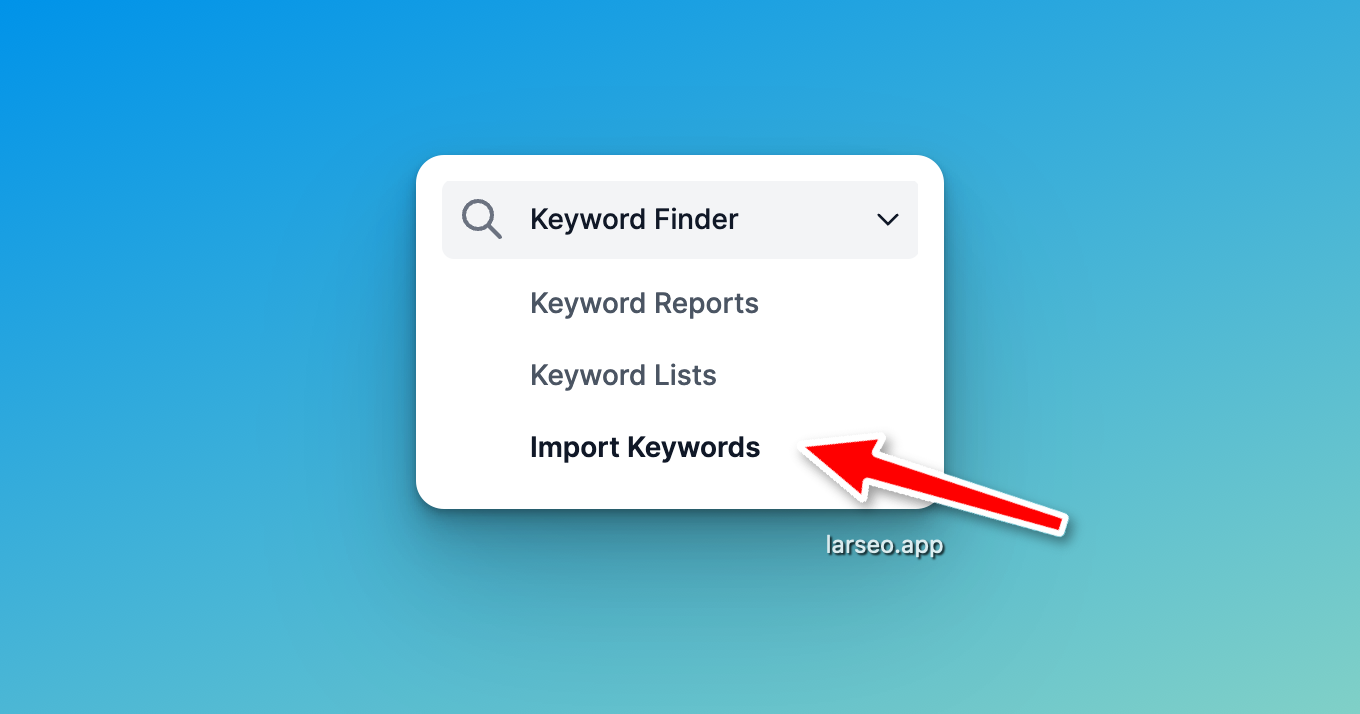
Step 2: Select the right method to cluster keywords
In your Keyword Report, please select all keywords they you would like to run a keyword clustering on. Then select Cluster Keyword from the Other Actions dropdown.
Larseo provides 2 clustering methods: SERP clustering and Semantic clustering.
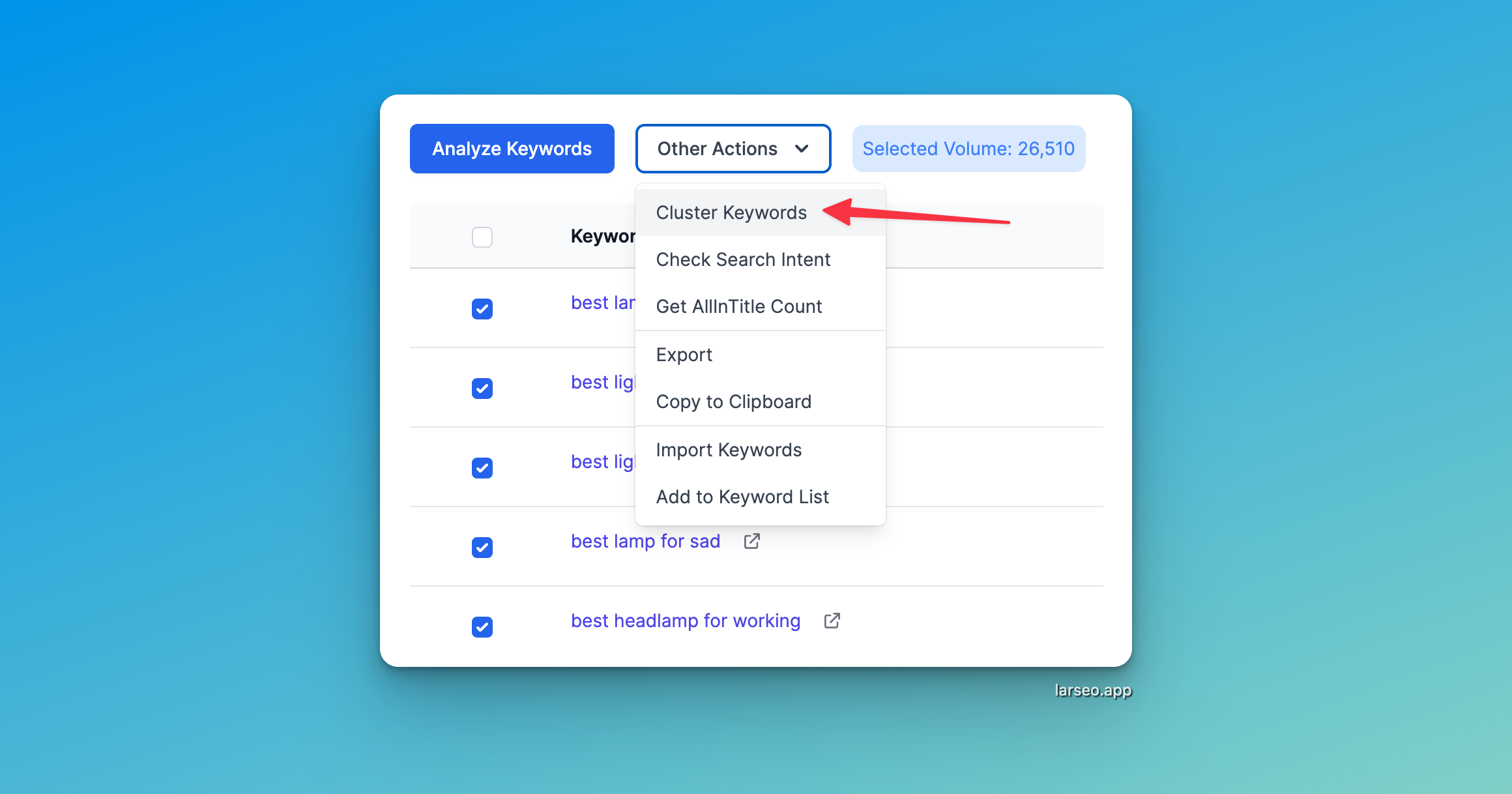
SERP Clustering
Larseo will cluster your keywords by analyzing the search engine results page (SERP). If two keywords share more than four pages in search engine results (similar results on SERP), it will group them together.
The benefit of this method is you are using Google as your partner to detect users’ search intent. If Google returns many similar pages for 2 keywords it means Google knows those 2 keywords have the same search intent.
The only disadvantage of this method is it takes more time for the huge keyword list because SERP analyzing is a cumbersome task.
Cost: 0.5 credit per keyword.
Pro Tip:
You can adjust the Similar Results on SERP threshold based on your niche from 3 to 7 (default is 4). The bigger threshold the more similarity of keywords in a cluster will have.
If you have a list of keywords that share the same pattern like "best bowling balls for *", SERPs clustering is the best choice for you.
Semantic Clustering
Larseo uses Natural Language Processing (NLP) models to semantically group keywords. It's much faster than SERP clustering since it doesn't involve Google crawling.
The benefit of this method is speed. If you have a huge list of keywords and your keywords span a wide range of topics, go for Semantic Clustering. You can group 50,000 keywords in just seconds.
Semantic Clustering settings:
Model: Depending on the language of your keywords, you may pick between the English Model and the International Model.
Cluster size: Assuming that the default size is 3, this implies that each cluster must have at least 3 similar keywords.
Threshold: The bigger threshold the more similarity of keywords in a cluster will have but it will cut down the number of clusters. Range from 10-100.
Cost: 0.25 credit per keyword.
After the keyword clustering process is finished, you will receive a list of clusters. Each cluster contains a parent keyword that has the most search volume and multiple similar keywords that can support the parent keyword.
Normally, each cluster will correspond to one article you can write for your website.
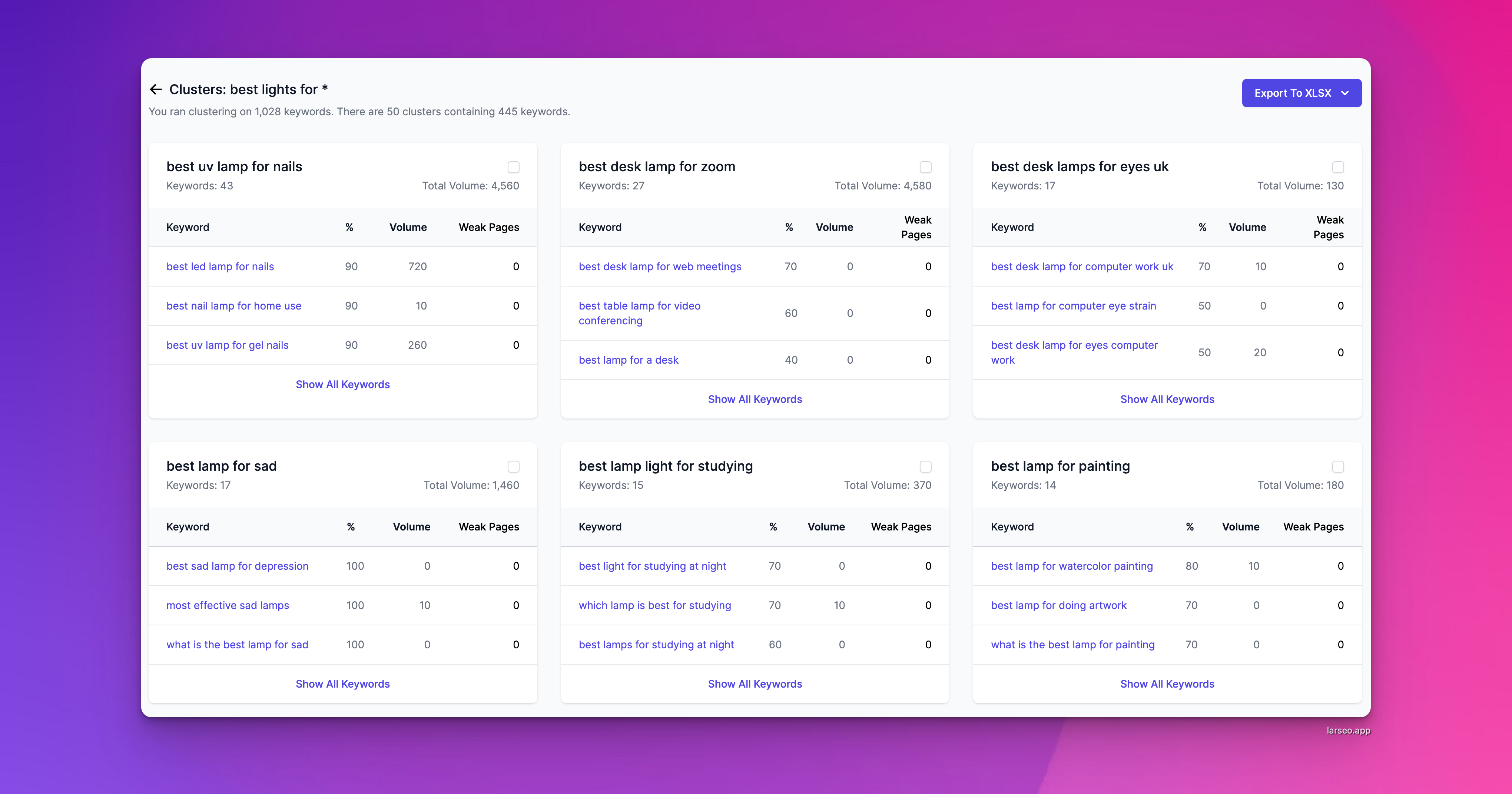
You can visit the clusters list page by clicking the Clusters tab from your Keyword Report.
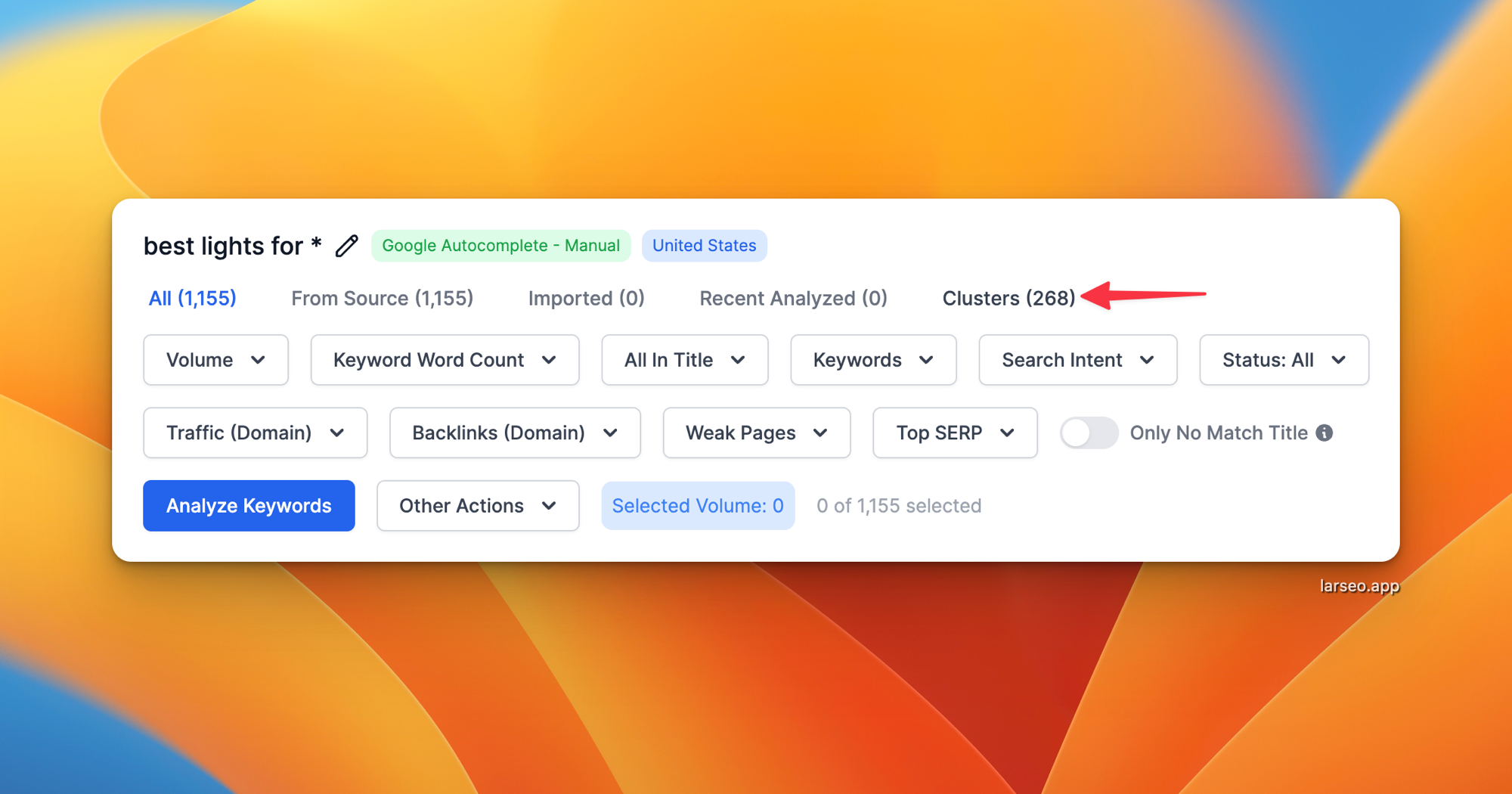
Note: Not 100% of keywords can be clustered, the Non-Clustered Keywords section contains keywords that don’t belong to any clusters.
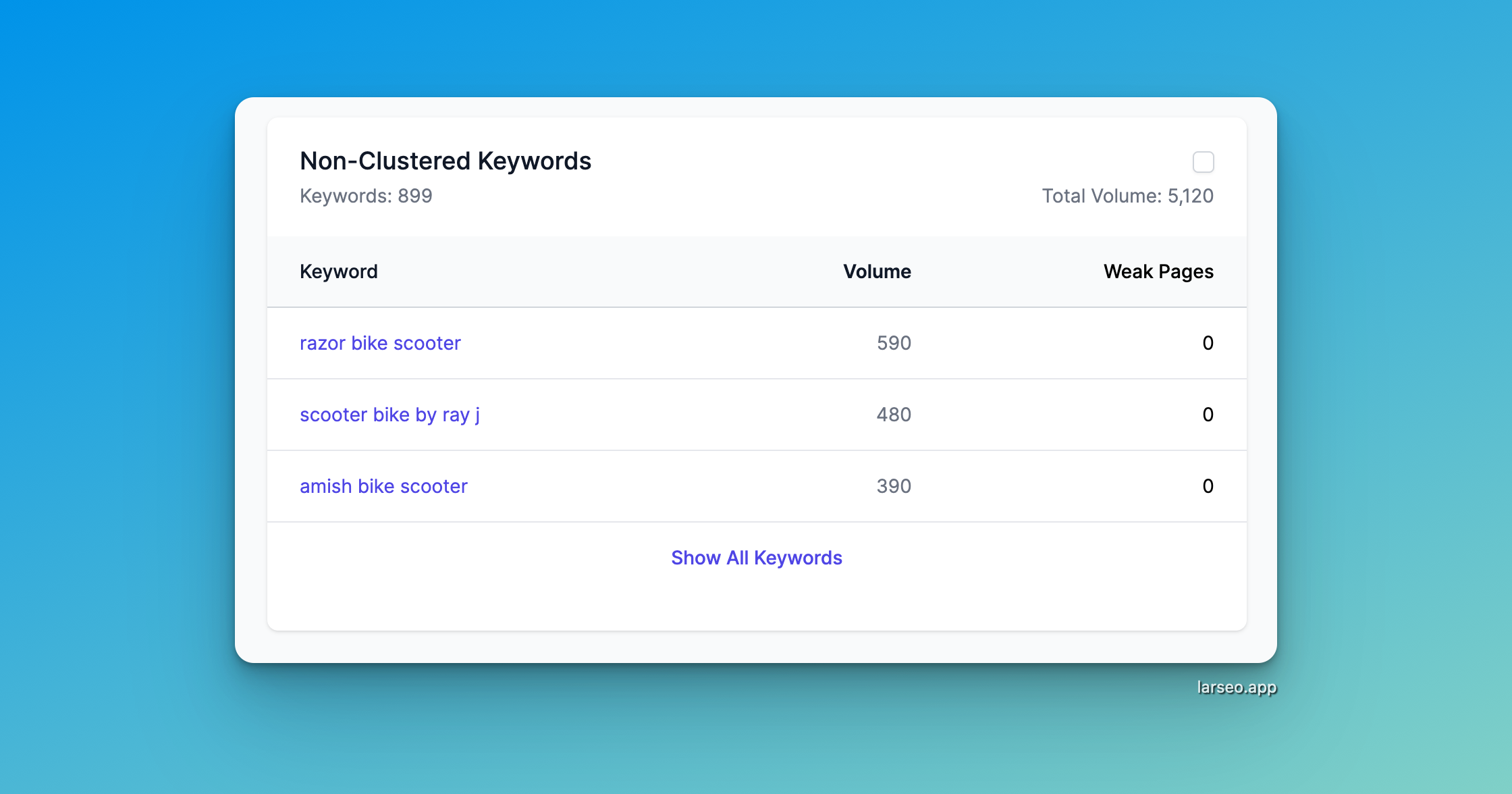
Since November 2022, Larseo will use AI to check the intent of a whole cluster. This feature will help you to write better content that can answer your customer's intent. Moreover, you can understand better your clusters to easily merge clusters or remove overlapping clusters. It works on both SERP and Semantic Clustering.
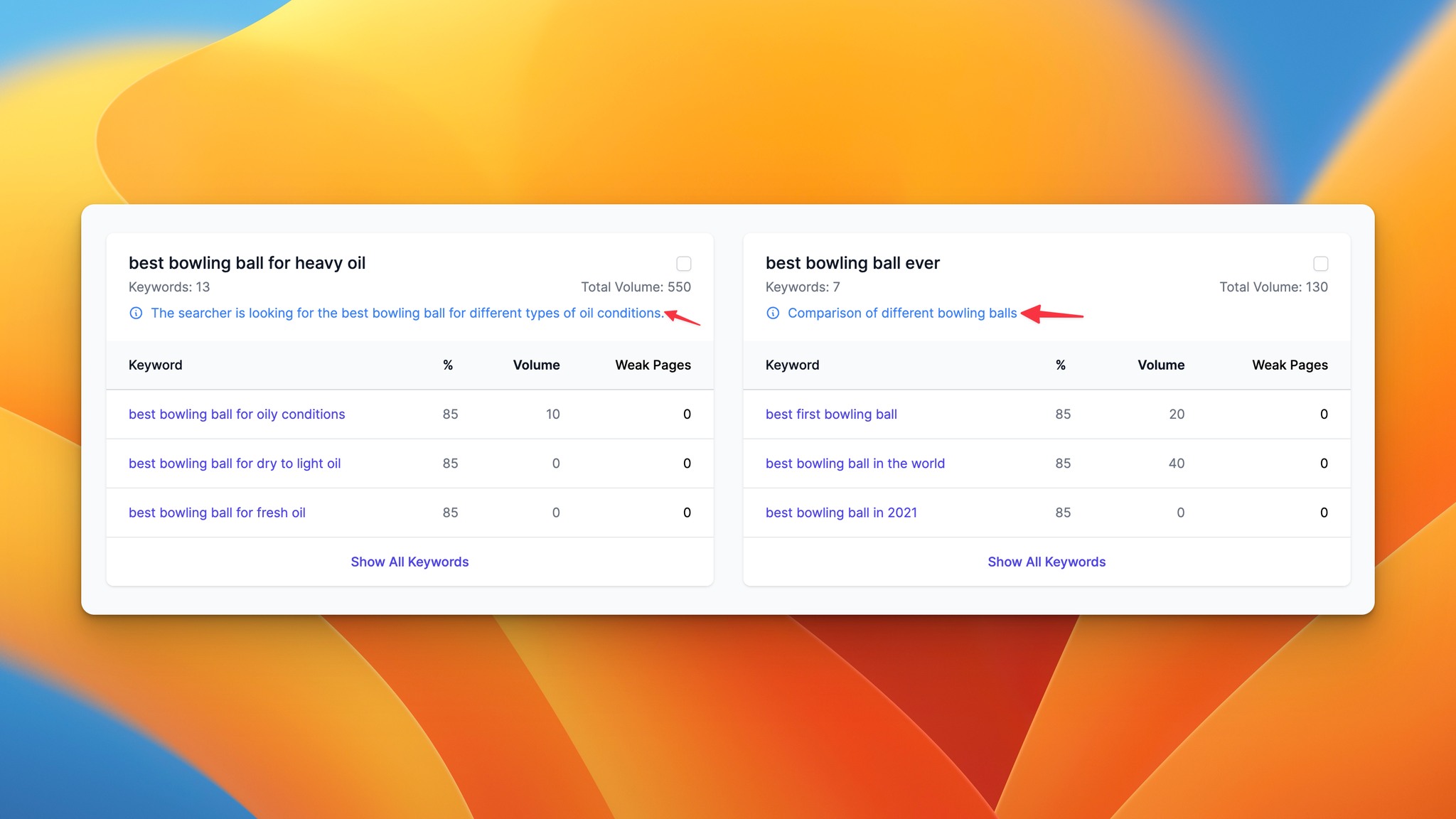
See more examples at: https://www.facebook.com/groups/larseo/posts/696310601551340/
Step 3: Export clusters
You can export all clusters to your computer. The Multiple Sheets setting will indicate if you want to put each cluster in a different Excel sheet.
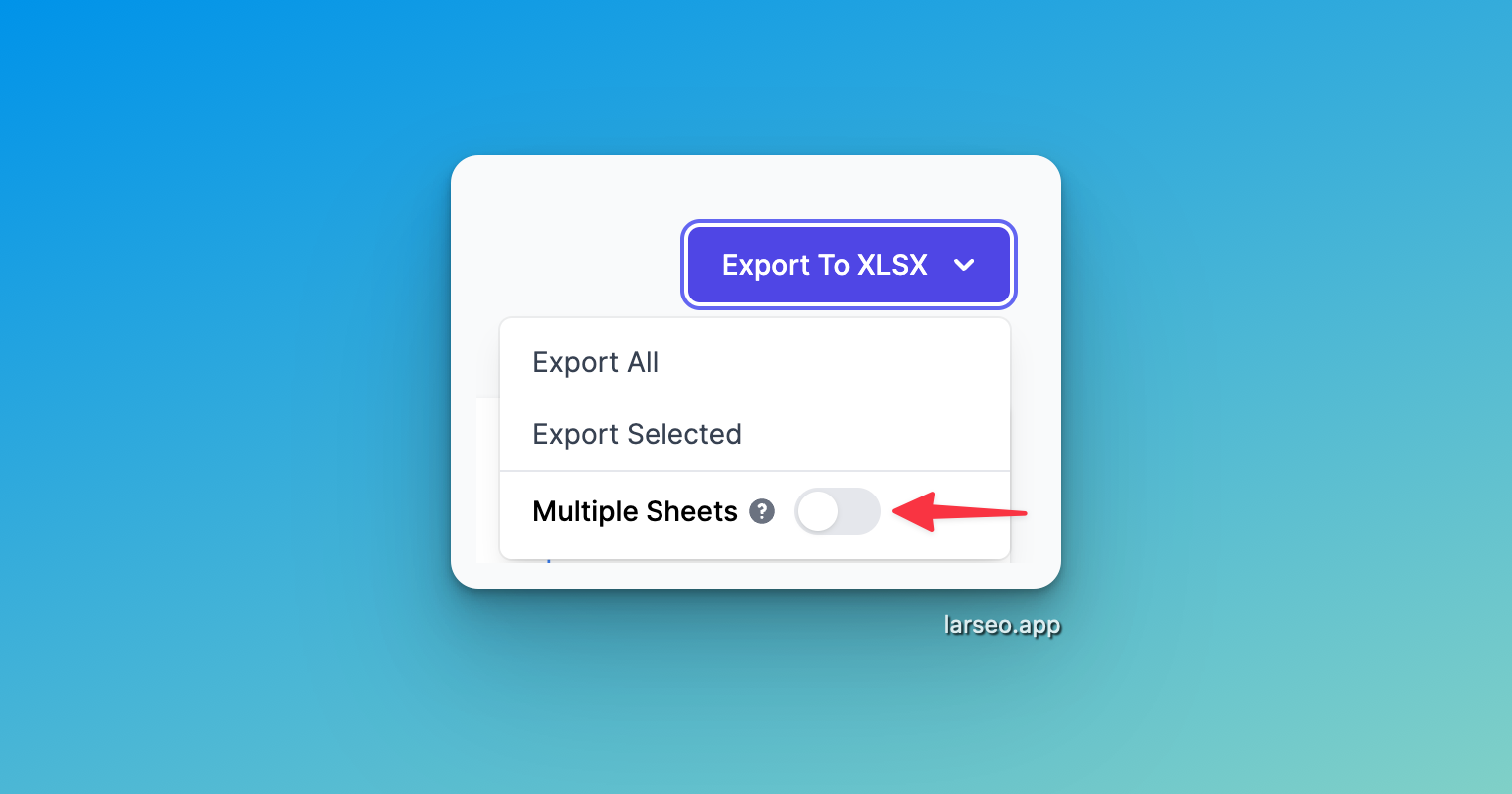
Your Turn to Find Your Clusters
Keyword clusters can give you the advantage you need to come out on top against your competition.
When you use keyword clustering on your content, you're showing Google that your website is an authority on your topic because you have a great amount of content covering all aspects the users want. This helps your website rank higher in search results.
You will have 800 credits per month (equivalent to 3200 clustered keywords) when registering a free account on Larseo. Let’s give it a try at: https://larseo.app/register